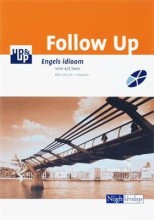Summary: First Aid
- This + 400k other summaries
- A unique study and practice tool
- Never study anything twice again
- Get the grades you hope for
- 100% sure, 100% understanding
Read the summary and the most important questions on First Aid
-
1 First Aid
-
What are the three purposes of first aid?
Preserve life
Prevent the casualty’s condition form worsening
Promote recovery. -
Describe the three steps for first aid?
1) Find out what is wrong with the casualty
2) Treat conditions in order of severity life-threatening conditions first
3) Arrange the next step of the person’s care -
2 Assessment
This is a preview. There are 1 more flashcards available for chapter 2
Show more cards here -
What is the acronym for the secondary assessment? And what does it stand for?
AMPLE
A –Allergy
M-medications
P-previous medical history :
L-last meal : when did theylast eat
E-event history -
What are some other signs to look out for (not included in the first and secondary assessment?
Pale, clammy skin (for dark skin look at the colour of skin inside the lips)
Blue tinges to the skin and lips (cyanosis)
Increase in pulse rate
Nausea or vomiting
Increased breathing (if the brain detects low oxygen)
Lowered breathing rate (indicates a brain problem)
Distressed breathing or gasping
Confusion or dizziness -
How do you assess for responsiveness and what is the acronym?
AAlert are theyalert and do they respond to questions
VVoice Does the casualty respond tovoice (can they answer simple questions or answer comands
PPain (does the casualty respond topain (do they open their eyes or move if I pinch their ear lobe)
UUnresponsive (is the casualtyunresponsive to any stimuli) -
What are ten common causes of unconsciousness and what is the acronym for them?
Fish Shaped
F FAINTING
I Imbalance of Heart
S Shock
H Head injury
S stroke
H Heart attack
A Asphyxia
P Poisoning
E Epilepsy
D Diabetes -
3 Unresponsive and breathing casualty
This is a preview. There are 1 more flashcards available for chapter 3
Show more cards here -
What should you do with pregnant women? What should you do if a casualty has been in the recovery position for 30 minutes?
-If the casualty is pregnant turn them onto their left side to help their circulation.
-if casualty is likely to remain in the recovery position for a while after 30 minutes roll them onto their back and then roll them onto the other side- unless other injuries prevent you from doing this. -
Name two things you should not do when the patient is in the recovery position?
Don't place a pillow under the casualty's head while they are on their back
don't place anything in the unconscious person's mouth. -
4 Heart Attack
This is a preview. There are 5 more flashcards available for chapter 4
Show more cards here -
What is a heart attack? What is another name for it? How is it treated?
A heart attack (myocardial infarction or MI) is a serious medical emergency in which the supply of blood to the heart is suddenly blocked, usually by a blood clot.- using medicines to dissolve blood clots
- surgery to help restore blood to the heart
-
What are the symptoms of a heart attack?
· Persistent, vice-like centralchest pain that may spread to thejaw and down one or botharms (a feeling of pressure, heaviness, tightness or squeezing across your chest)
·Pale
·Cold clammy
· Fast and shallowbreathing
· Fast, weak, irregularpulse
·Anxious ( a sudden feeling of anxiety that can feel similar to a panic attack)
·Nausea (feeling sick or being sick)
· Suddenonset , which can happened during rest
-lots of coughing or wheezing due to a build-up of fluid in the lungs.
- Higher grades + faster learning
- Never study anything twice
- 100% sure, 100% understanding































